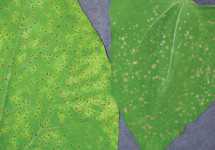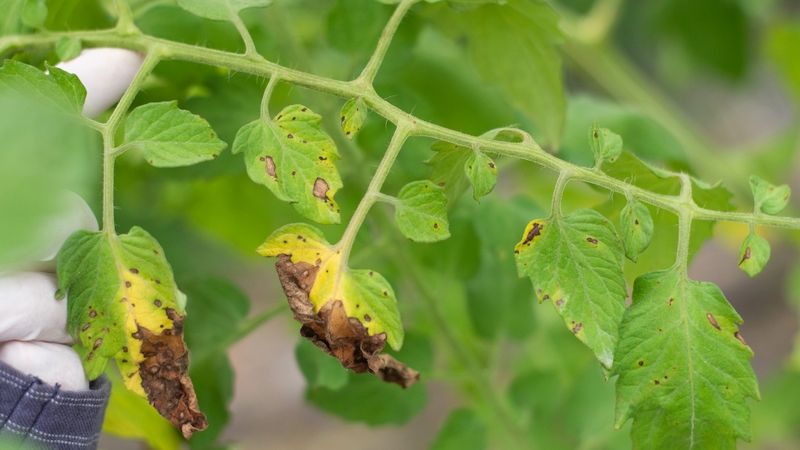Rust Resistant Bean Crops

The detection of 3,000 proteins produced in plants of common beans could help breeders develop resistance against the bean rust fungus, Uromyces appendiculatus, a major concern for domestic dry bean and snap bean growers. This rust is prevalent throughout the U.S., according to research by USDA’s Agricultural Research Service (ARS) scientists and cooperators.
Plant pathologist Bret Cooper of the ARS Soybean Genomics and Improvement Laboratory in Beltsville, MD, leads the research, which could help scientists determine which proteins produced in bean plants are involved in providing resistance to rust fungus.
Cooper says currently growers rely mostly on resistance genes (R-genes) to confer protection to rusts. R-genes naturally exist in the DNA of different varieties of beans, and breeders cross R-genes from one bean variety into others to make them resistant. R-genes recognize rust fungus proteins and then turn on another set of defense response proteins that allow the plant to fight the fungus. In turn, rusts evolve to evade R-gene detection, meaning that the plants can no longer turn on their defense response proteins.
“We have identified some of the defense response protein genes turned on by an R-gene,” Cooper says. “This may lead to protection against rusts that can evade R-gene detection.”
Rust Is High-Risk
Rust symptoms initially appear as small white flecks on the upper leaf surface, then develop into reddish-brown pustules, which are small eruptions on the leaf surface. When severe infections occur, the leaves curl upward, dry, turn brown, and drop prematurely, and pod set, pod fill, and seed size are reduced.
In 2004, a separate rust fungus that causes Asian soybean rust arrived in the U.S. Domestic soybean cultivars have little resistance to soybean rust, which threatens America’s second-largest crop. It is hoped that the discovery of the dry bean rust disease resistance proteins will help identify similar proteins in soybeans and advance soybean breeding efforts, as well.
Cooper and his collaborators have been studying Early Gallatin, a dry bean that has the Ur-4 R-gene. “I was told by my collaborator, Dr. Talo Pastor-Corrales, a breeder at USDA-ARS, that Early Gallatin is resistant to the new rust races in Michigan and North Dakota that are breaking the Ur-3 R-gene,” says Cooper.
Technology Speeds Progress
Until recently, disease resistance genes and the proteins they produce were studied one at a time, but Cooper and his team used a process called high-throughput mass spectrometry to identify, at a much faster rate, proteins by their unique molecular mass. With this technology, they evaluated more than 3,000 rust resistance proteins in beans in less than three years, and measured how protein levels change in plants, and which ones provide disease resistance.
The study revealed more than 1,500 “molecular battles,” interactions between the fungus and the plant, helping Cooper and his team identify a set of proteins with potential to be master regulators of a strong plant resistance response.
“In order for the fungus to infect the plant, it has to dismantle the plant’s defense system, and trick the plant into producing nutrients for the fungus,” explains Cooper. “Meanwhile, the plant fights back by trying to deploy and stabilize its defense system and limit the nutrients for the fungus. All of this happens at a molecular level and if the plant wins the battle, it will be resistant. Otherwise, the fungus wins. In our study, we observed the increase of some defense proteins by the plant and the decrease of other plant defense proteins as actuated by the fungus. Some of the defense proteins found were linked to strong resistance controlled by the R-gene Ur-4.”
Cooper says the protein genes and study data are available to breeders currently. This could lead to improved bean varieties within the next three years.










